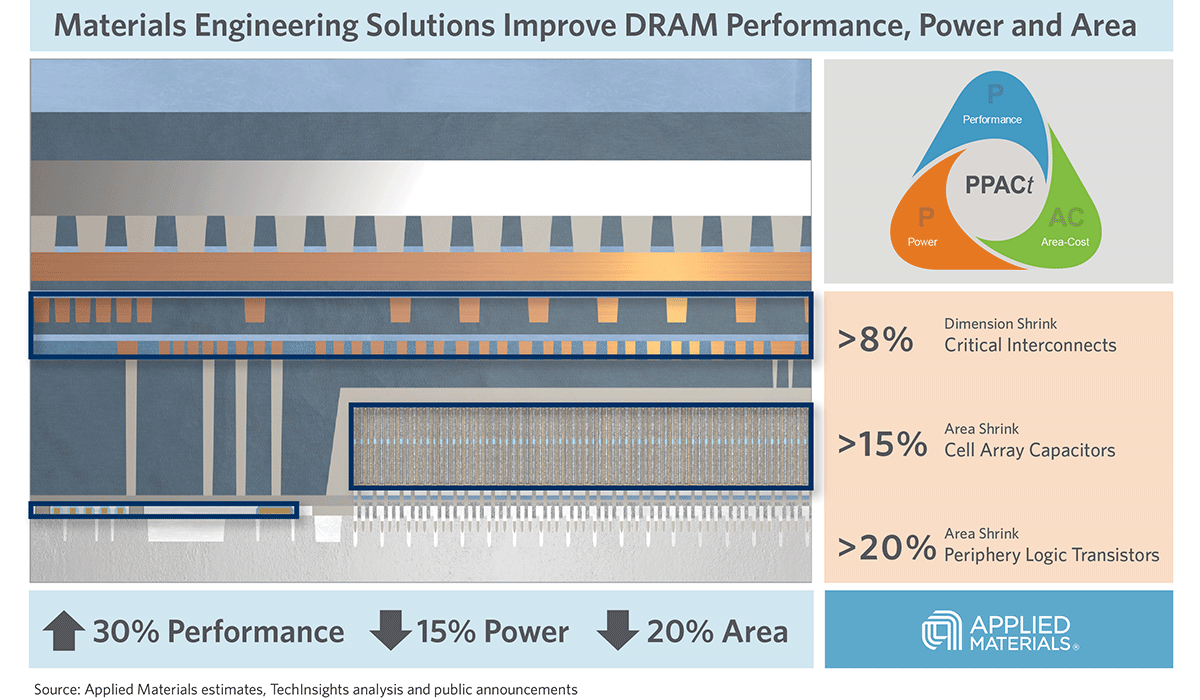Products & Technologies
Products & Technologies
Services
Resources
Posted
December 03, 2019

Stay updated on our content.
Exploring the Future of Logic in the AI Era with Facebook, IBM, Intel, Stanford and TSMC

by Regina Freed
Dec 03, 2019
The IEEE International Electron Devices Meeting (IEDM) has long held its place among the world’s leading forums for reporting advancements in semiconductor technology. This year’s event will take on even greater importance as the chip industry grapples with the evolving technical requirements of the Internet of Things (IoT), Big Data and AI.
In order to adapt to this new era of computing, the industry needs to start operating differently. For one, we need to rethink how we achieve improvements in chip performance, power and area-cost (PPAC) as the AI Era puts new burdens on an industry that can no longer count on traditional Moore’s Law scaling to solve all its problems. What’s needed is a “New Playbook” for semiconductor design and manufacturing that consists of multiple techniques to drive innovation.
Just as important as having a New Playbook is creating new ways for the technology ecosystem to work together on shared challenges. This requires setting aside the serial innovation process the industry has followed for years, so that materials scientists can sit alongside chip architects, systems engineers and algorithm designers. But what would that look like? Would the group have similar or differing views for scaling PPAC in the AI Era?
To find out, come to IEDM in San Francisco on Dec. 10, where I have the privilege of moderating a panel called “The Future of Logic: EUV is Here, Now What?” Sharing the stage with me will be engineers and scientists from Facebook, IBM, Intel, Stanford and TSMC. We will discuss how we continue scaling without the assurance of Moore’s Law, and how the demands of AI change our approach to scaling. We will also address the diverging requirements of different applications in the cloud and at the edge.
While the panelists’ views may vary, one thing is for certain—the conversation won’t sound like the past. One size used to fit all architecturally, but that’s not true anymore and the fragmentation will only increase from here as AI, high performance computing, mobile, edge and other use cases have distinct needs. Performance can mean different things in different areas and, in the case of AI, less precision might actually be more optimal. That’s not the world we all worked in even a few years ago.
I’m excited to host this panel because it is an example of the New Playbook in action. We’re bringing different parts of the technology ecosystem—from materials to systems—together on the same stage to discuss their perspectives and disciplines on shared technology challenges.
See you on Dec. 10 in San Francisco.
Tags: IEDM, New Playbook, AI, Moore's Law, Big Data, logic, Facebook, Intel, stanford, TSMC, PPAC, IBM
Regina Freed
Vice President, AIx™ Solutions

Regina Freed has more than 20 years of experience in the semiconductor industry, managing semiconductor process and equipment development for both logic and memory processes, including co-optimization between deposition and etch, lithography, metrology, and defect inspection. At Applied Materials, Regina leads our AIx™ program that enables us and our customers to accelerate development and ramp through Actionable Insights as well as control our processes to deliver improved process windows, enabling customers to scale faster and at lower cost, while optimizing device performance.

Now is the Time for Flat Optics
For many centuries, optical technologies have utilized the same principles and components to bend and manipulate light. Now, another strategy to control light—metasurface optics or flat optics—is moving out of academic labs and heading toward commercial viability.

Seeing a Bright Future for Flat Optics
We are at the beginning of a new technological era for the field of optics. To accelerate the commercialization of Flat Optics, a larger collaborative effort is needed to scale the technology and deliver its full benefits to a wide range of applications.

Introducing Breakthroughs in Materials Engineering for DRAM Scaling
To help the industry meet global demand for more affordable, high-performance memory, Applied Materials today introduced solutions that support three levers of DRAM scaling.
